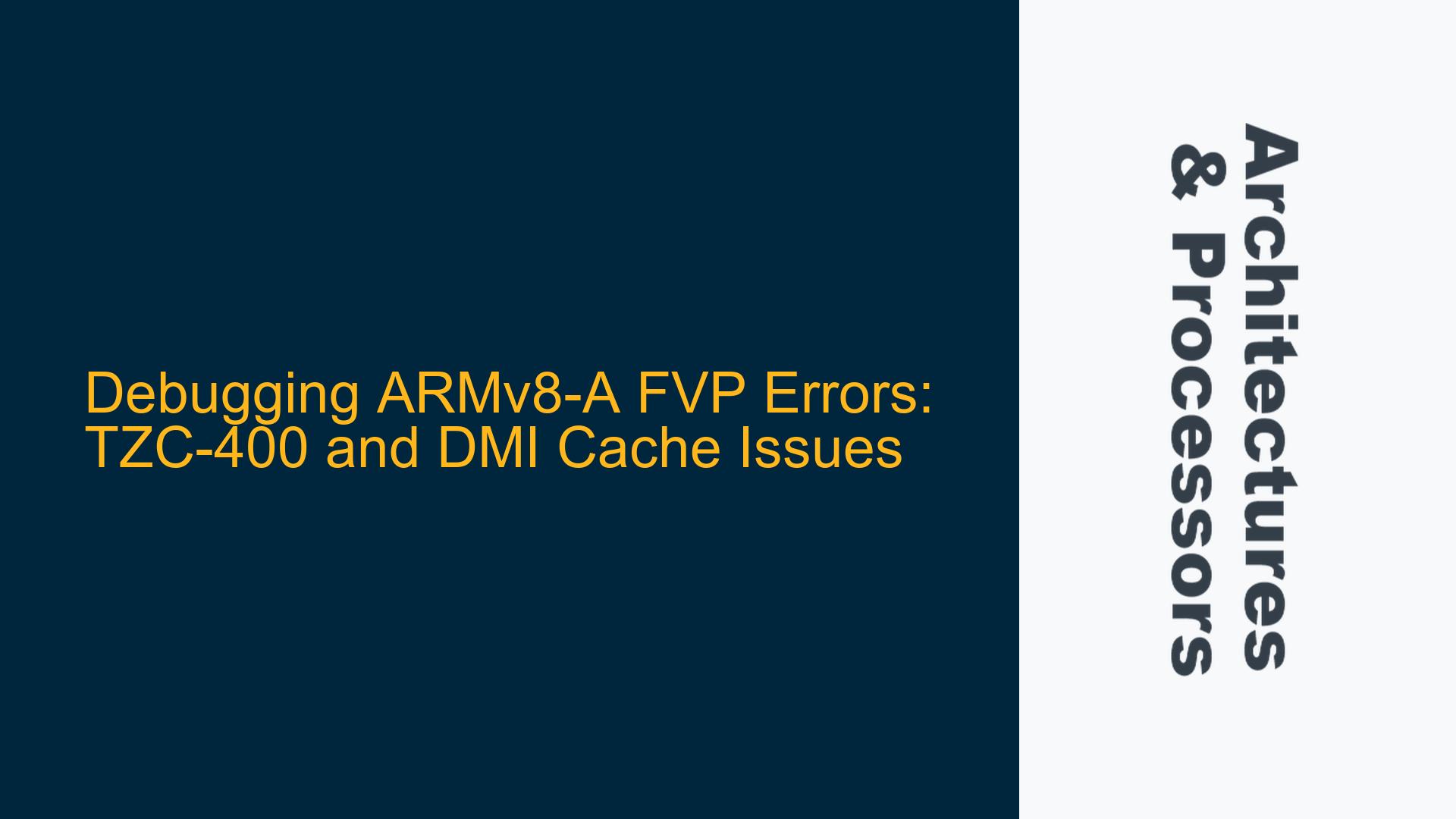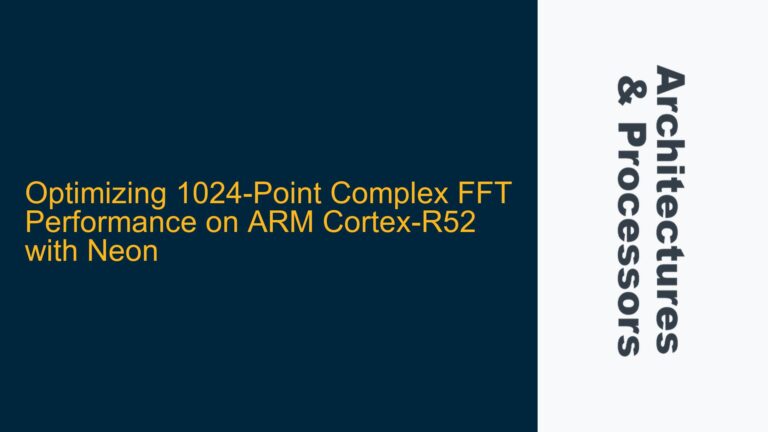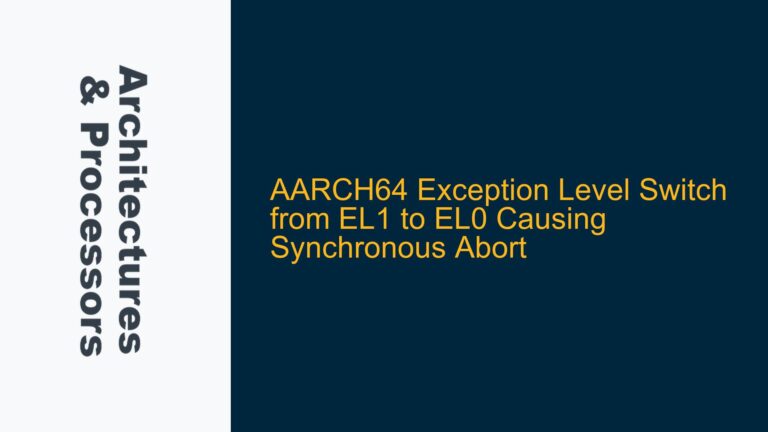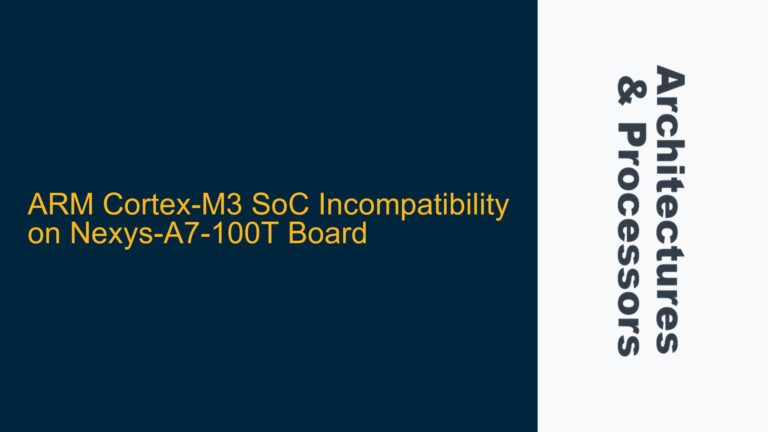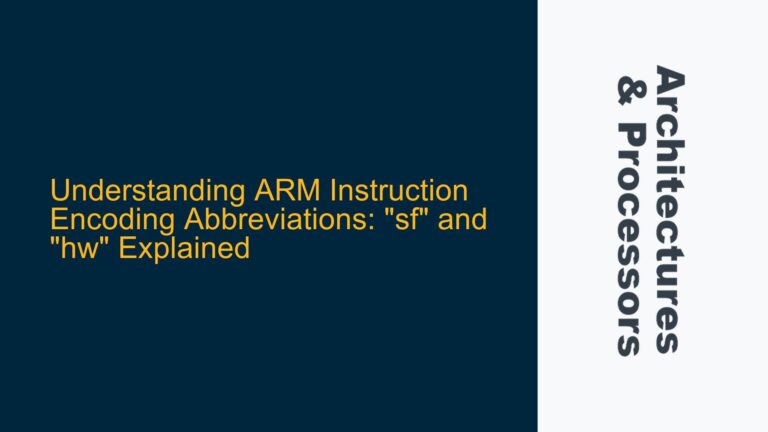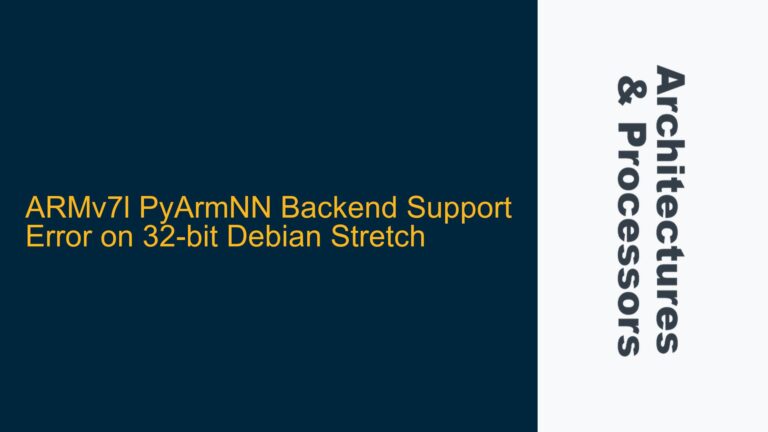ARMv8-A FVP Debugging Failures Due to TZC-400 and DMI Cache Warnings
When working with ARMv8-A architectures, particularly using Fixed Virtual Platforms (FVPs) for debugging, developers often encounter two critical issues: errors related to the TrustZone Controller (TZC-400) and warnings about the simulation code-translation cache failing to gain Direct Memory Interface (DMI) access. These issues can halt debugging sessions and significantly reduce simulation performance. The TZC-400 error typically manifests when attempting to run code from DRAM without proper firmware initialization or secure memory configuration. The DMI cache warning, on the other hand, indicates a performance degradation due to the simulation environment’s inability to efficiently translate and access memory. Understanding these issues requires a deep dive into the ARMv8-A architecture, the role of TZC-400 in memory protection, and the intricacies of DMI cache behavior during simulation.
The TZC-400 is a critical component in ARMv8-A systems, providing memory protection by partitioning the address space into secure and non-secure regions. When the FVP attempts to run code from DRAM without prior firmware initialization, the TZC-400 blocks access, leading to the error message. This is particularly common in bare-metal debugging scenarios where the system state is not fully initialized. The DMI cache warning, while not fatal, indicates that the simulation environment is struggling to maintain efficient memory access patterns, which can lead to slower simulation speeds and longer debugging cycles. Both issues are interconnected, as improper memory configuration can exacerbate DMI cache performance problems.
TZC-400 Secure Memory Configuration and DMI Cache Performance Degradation
The root cause of the TZC-400 error lies in the secure memory configuration of the ARMv8-A system. The TZC-400 enforces access control policies based on the security state of the system and the memory regions being accessed. In a typical ARMv8-A system, DRAM is often configured as secure memory by default, requiring firmware to initialize the TZC-400 and set up the appropriate access permissions. When debugging bare-metal applications, the absence of firmware initialization can lead to the TZC-400 blocking DRAM access, resulting in the observed error. The bp.secure_memory=false parameter is a workaround that disables secure memory enforcement, but it may not always resolve the issue, especially if the underlying memory configuration is incorrect.
The DMI cache warning is a performance-related issue that arises when the simulation environment cannot efficiently translate virtual addresses to physical addresses. The DMI cache is responsible for storing these translations to speed up memory access during simulation. When the cache fails to gain DMI access, it indicates that the simulation environment is falling back to slower memory access methods, reducing overall performance. This can be caused by several factors, including incorrect memory mappings, insufficient cache size, or conflicts between the simulation environment and the target system’s memory architecture. In the context of ARMv8-A FVP debugging, the DMI cache warning often accompanies TZC-400 errors, as both issues stem from improper memory configuration.
Resolving TZC-400 Errors and Optimizing DMI Cache Performance
To resolve the TZC-400 error, developers must ensure that the ARMv8-A system is properly configured for secure memory access. This involves initializing the TZC-400 with the correct access permissions before attempting to run code from DRAM. In bare-metal debugging scenarios, this can be achieved by adding a small firmware stub that configures the TZC-400 during system startup. The firmware stub should set up the necessary memory regions as non-secure, allowing the debugger to access DRAM without encountering TZC-400 errors. Additionally, developers should verify that the bp.secure_memory=false parameter is correctly applied in the FVP configuration, as this can override the default secure memory settings.
Optimizing DMI cache performance requires a thorough understanding of the simulation environment’s memory architecture. Developers should start by reviewing the memory mappings defined in the FVP configuration, ensuring that they align with the target system’s memory layout. If the DMI cache warning persists, increasing the cache size or adjusting the cache configuration parameters may help. In some cases, the warning can be mitigated by reducing the complexity of the memory access patterns in the target application. For example, simplifying data structures or optimizing memory access routines can reduce the load on the DMI cache, improving simulation performance.
In conclusion, debugging ARMv8-A systems using FVPs can be challenging due to TZC-400 errors and DMI cache warnings. These issues are often interrelated, stemming from improper memory configuration and suboptimal simulation environment settings. By understanding the role of the TZC-400 in secure memory management and the factors affecting DMI cache performance, developers can implement effective solutions to resolve these issues. Proper firmware initialization, careful memory configuration, and optimization of the simulation environment are key to successful ARMv8-A debugging.
